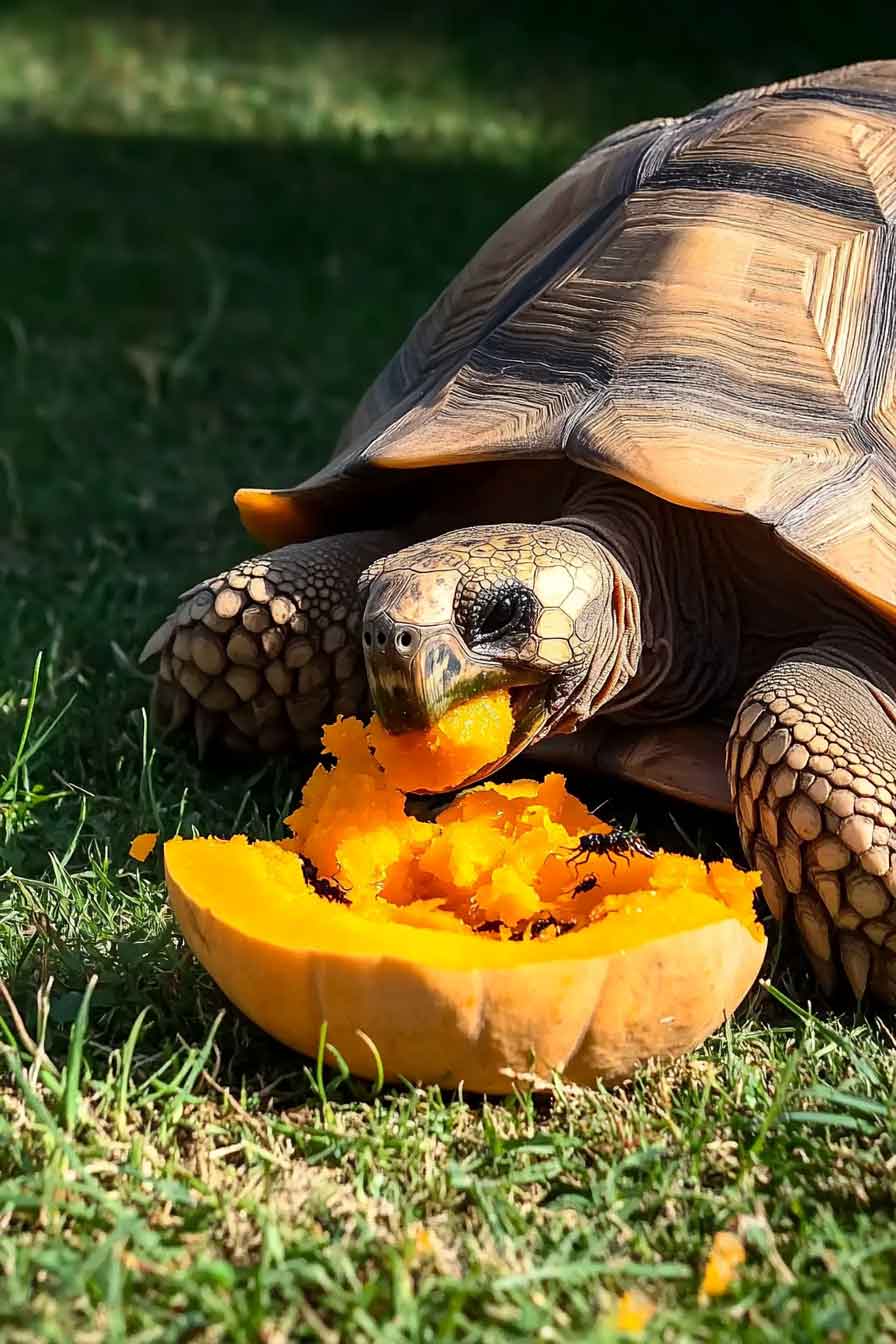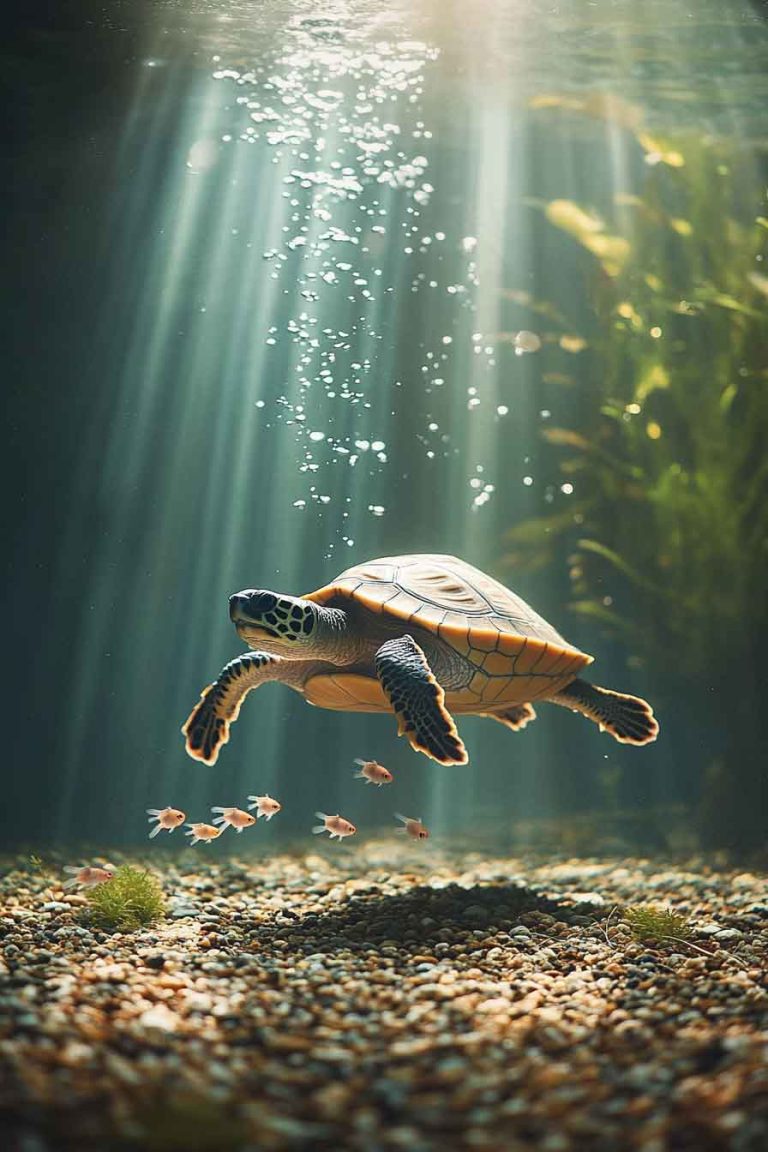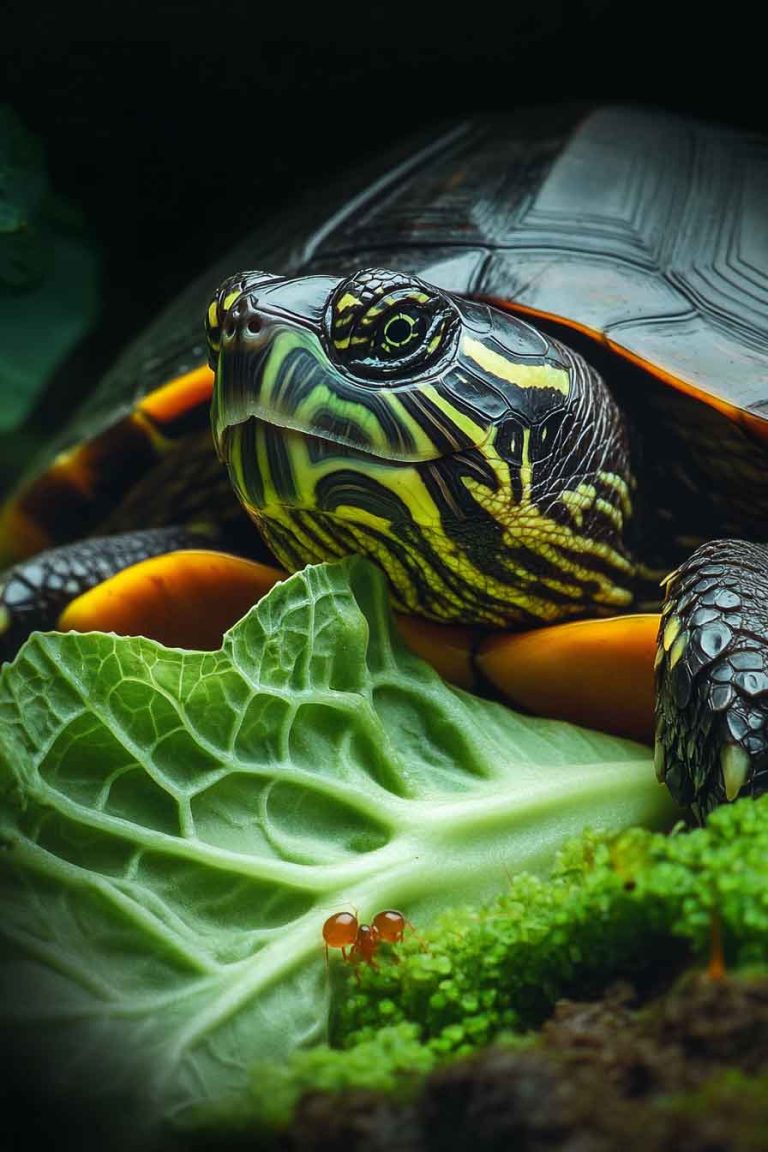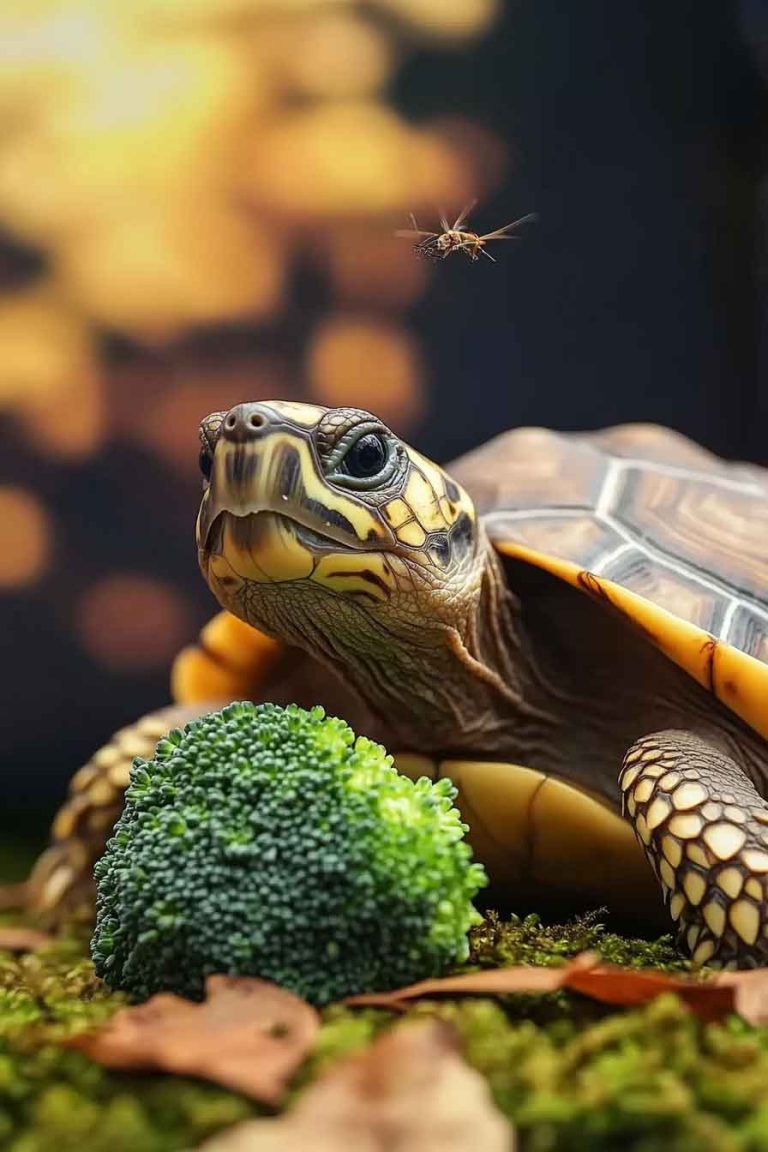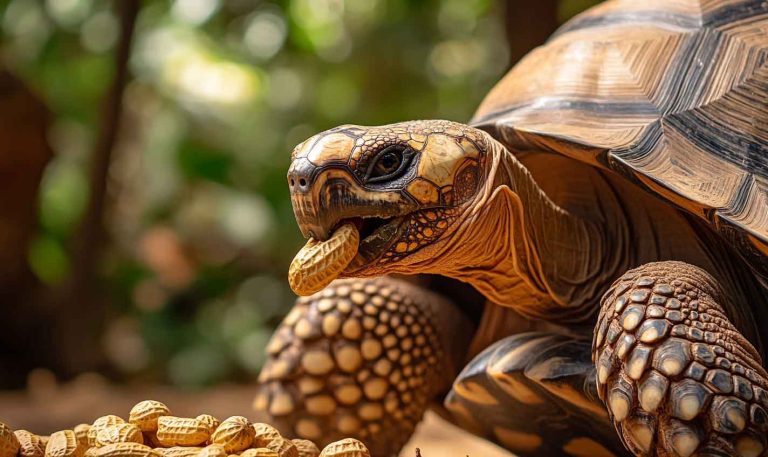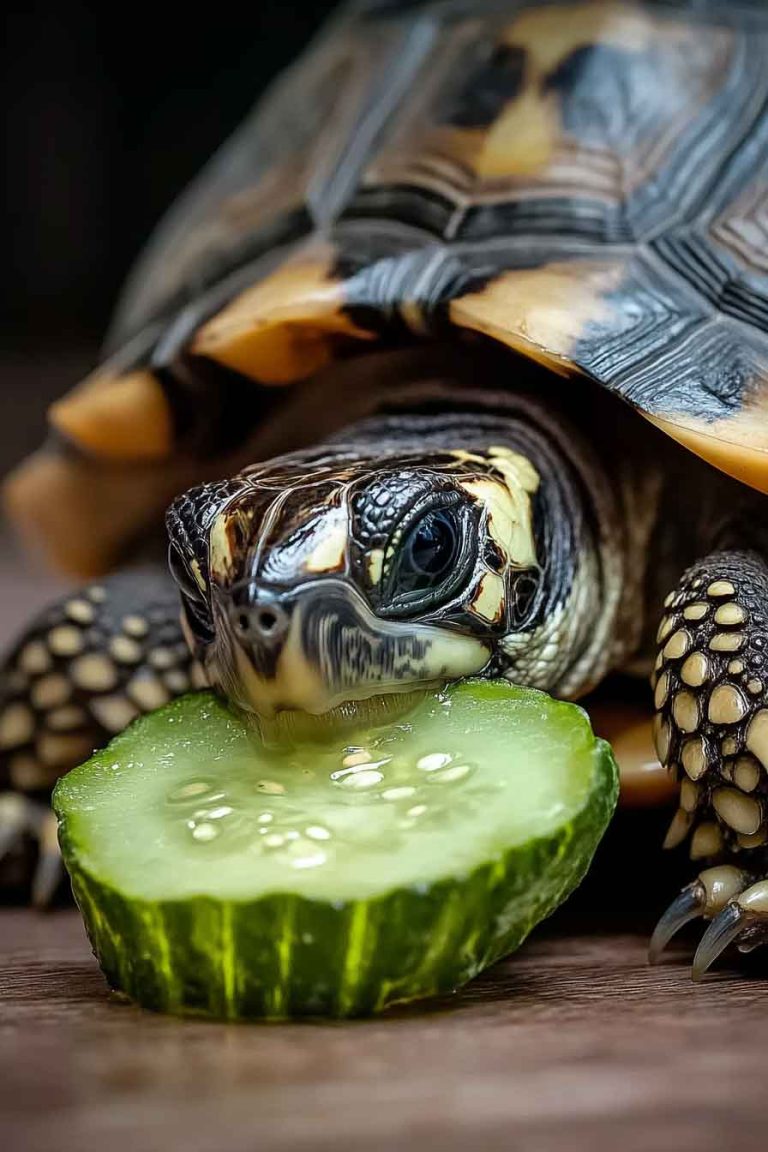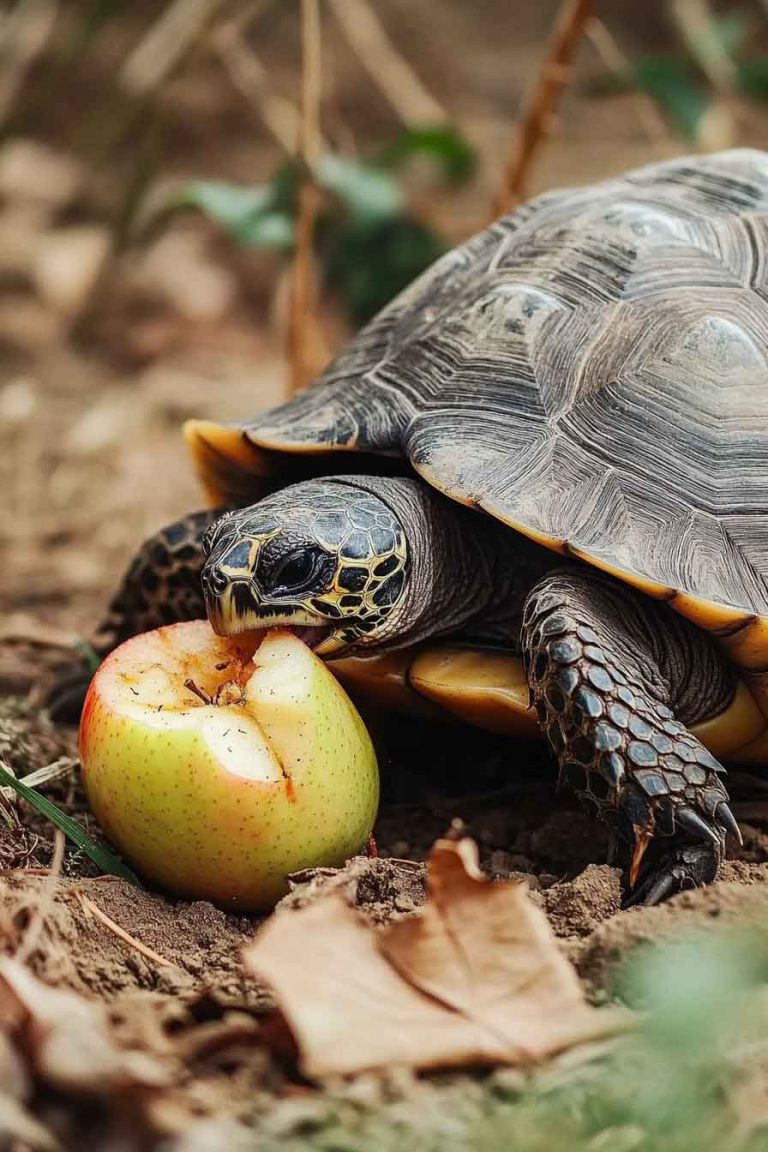Can Turtles Eat Pumpkin? – Raw Pumpkin Safety Guide for Pet Turtles
Ever carved a pumpkin and looked at your turtle, wondering if they could nibble on the scraps? I’ve been there. Pumpkins are soft, colorful, and full of moisture. They seem turtle-friendly, right? So, can turtles eat pumpkin? Yes, they can — but not too much. While pumpkin isn’t poisonous like onions, it still needs to…
Ever carved a pumpkin and looked at your turtle, wondering if they could nibble on the scraps? I’ve been there. Pumpkins are soft, colorful, and full of moisture. They seem turtle-friendly, right?
So, can turtles eat pumpkin? Yes, they can — but not too much. While pumpkin isn’t poisonous like onions, it still needs to be served carefully. You can feed it raw, but only in small, plain pieces.
In this post, I’ll walk you through exactly what’s safe, what’s risky, and how I personally feed pumpkin to my turtle without causing tummy troubles. If you’ve got a turtle and a leftover pumpkin on the counter — keep reading.
Can You Feed Pumpkin To Your Pet Turtle?
Yes, turtles can eat pumpkin — but it should be an occasional treat, not an everyday meal.
Pumpkin is naturally sweet, soft, and rich in water. Turtles like its texture. I gave mine a small chunk of raw pumpkin once — and he gobbled it up. But I noticed something later: his poop was softer than normal. That told me pumpkin should be given carefully, not casually.
Why? Because pumpkin is high in fiber, sugar, and phosphorus. It doesn’t have enough calcium to balance things out. And turtles really need that calcium for their bones and shells. Too much pumpkin, too often, can throw that balance off.
So yes, you can feed pumpkin — but in tiny, fresh pieces, just once in a while.
What’s Better: Raw or Cooked Pumpkin?
Raw pumpkin is better. That’s what I give my turtle.
Here’s why:
- Raw pumpkin keeps more of its vitamins (especially Vitamin A).
- It’s closer to what turtles might find in the wild — soft plant matter.
- It’s not covered in butter, salt, sugar, or spice — which are all bad for reptiles.
Cooked pumpkin, on the other hand, usually means added ingredients. Most people cook it in pies, soups, or casseroles — and those flavors are toxic for turtles. Even plain baked pumpkin is usually softer and has lost some nutrients.
So if you’re feeding pumpkin, here’s what I recommend:
- Choose raw, fresh pumpkin (not canned, not sweetened).
- Wash it well.
- Peel off the skin.
- Cut into small, bite-sized pieces.
- Remove seeds (more on that later).
My turtle does best with a few thin chunks no bigger than his mouth. That way, he can chew without choking or overloading his gut.
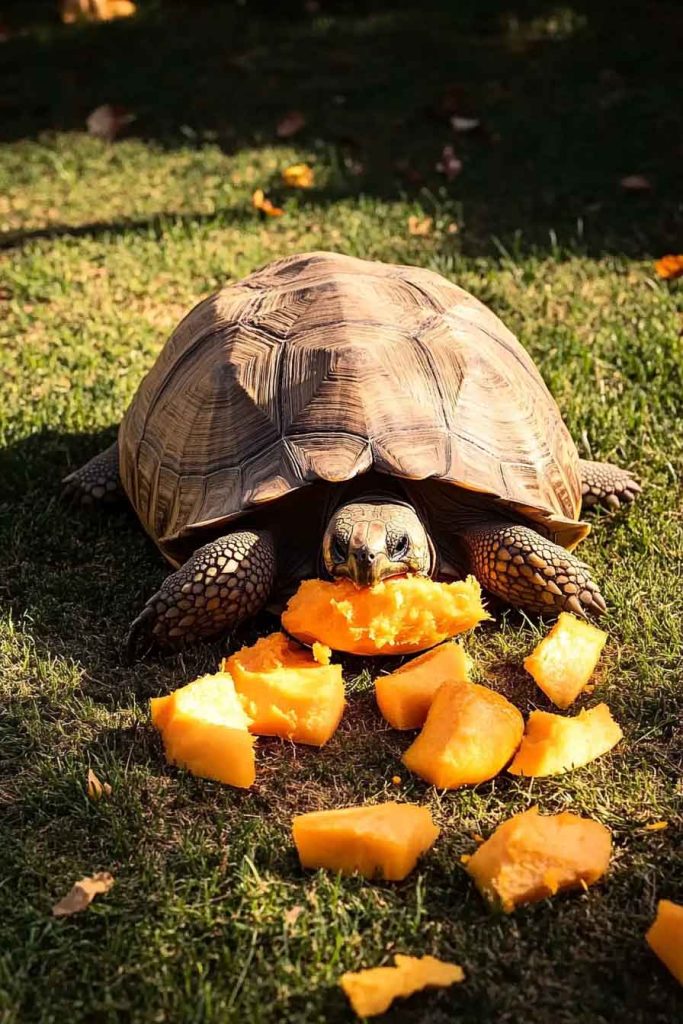
Nutritional Breakdown of Raw Pumpkin (Per 100g)
To understand what pumpkin does to your turtle, let’s break down what’s inside it:
- Calories: 26
- Water: 91.6 g
- Carbohydrates: 6.5 g
- Sugar: 2.76 g
- Fiber: 0.5 g
- Protein: 1 g
- Fat: 0.1 g
- Calcium: 21 mg
- Phosphorus: 44 mg
- Vitamin A: 8513 IU
- Vitamin C: 9 mg
- Potassium: 340 mg
- Magnesium: 12 mg
What stands out? A few things:
- High Vitamin A – great for turtle eyes, skin, and immunity.
- Low calcium and high phosphorus – not great for shell strength.
- Lots of water – which keeps them hydrated.
- Some sugar and fiber – too much can cause loose stool or bloating.
I love that it has Vitamin A — turtles need that. But the calcium-phosphorus ratio isn’t ideal. It’s around 1:2, and turtles need more like 2:1. That’s why I don’t give pumpkin too often — just now and then as a little bonus treat.
Do Turtles Like Pumpkin?
Yes — most turtles will try pumpkin if you offer it.
In my experience, turtles love anything new and soft. The bright orange color and sweet smell of raw pumpkin often get their attention right away. My turtle took a few seconds to sniff it, then started nibbling. He didn’t go crazy for it like he does with fruits or worms, but he definitely seemed curious and interested.
That said, not all turtles are the same. Some may ignore it, while others may eat too much too fast — and that’s where the trouble can start.
If your turtle eats a large amount of pumpkin in one sitting, it could cause:
- Loose stool or diarrhea
- Temporary bloating
- A drop in appetite for regular food
This happened to me once when I gave too much pumpkin two days in a row. My turtle’s poop turned soft, and he stopped eating his greens. After I cut back, everything went back to normal within a day.
So yes, turtles can like pumpkin — but that doesn’t mean you should let them eat a lot.
Health Risks of Feeding Too Much Pumpkin
Pumpkin isn’t toxic. But if given too often or in large portions, it can lead to problems. Here’s what I’ve learned the hard way:
1. Calcium Deficiency
Turtles need strong, healthy shells — and that comes from a good supply of calcium in their diet. If they eat foods that are too high in phosphorus (like pumpkin) and too low in calcium, the body can’t absorb calcium properly.
This leads to:
- Weak or soft shells
- Deformed growth
- A condition called Metabolic Bone Disease (MBD)
I always try to keep this in mind when feeding anything new. Pumpkin should never replace calcium-rich staples like dandelion greens, kale, or cuttlebone.
2. Digestive Trouble
Pumpkin has natural sugars and fiber — which can be both good and bad.
In small amounts, it helps with digestion. But too much can cause:
- Runny poop
- Gas or bloating
- Dehydration from water loss in soft stools
My rule now is simple: I only give 1–2 small pieces at a time, once a week at most. That way, I avoid turning my turtle’s tank into a mess and keep his belly happy.
3. Overfeeding Empty Calories
Pumpkin is low in protein and fat — which turtles need, especially younger or carnivorous ones. If they fill up on pumpkin, they might skip the nutrient-rich foods that actually support their growth and shell strength.
It’s a little like giving your turtle a snack before dinner. They feel full, but they’re not getting what their body needs. I’ve seen my turtle ignore pellets and leafy greens after getting a treat — and that’s why I always space out treats carefully.
Can Turtles Eat Pumpkin Seeds or Skin?
Let’s break this down because I’ve tried both — and learned a few things the hard way.
Pumpkin Seeds
Some turtle owners say it’s okay in small amounts, but I avoid them completely. Here’s why:
- Seeds are hard and tough to chew
- They pose a choking risk, especially for small or young turtles
- They’re high in fat, which turtles don’t need in large amounts
- They can lead to impaction (a dangerous blockage in the gut)
I once gave my turtle a few roasted seeds (before I knew better), and he didn’t even try. That was a clear sign: stick to the soft flesh and skip the seeds.
Pumpkin Skin
The skin is even tougher than the seeds. It’s leathery and hard to chew, even for bigger turtles.
Turtles don’t have the kind of jaw strength or digestive system to break down thick, fibrous skin. Feeding it can lead to:
- Mouth injuries
- Gut blockages
- Loss of appetite
So now, I always peel the skin and scoop the flesh only.
Can Baby Turtles Eat Pumpkin?
No — I don’t recommend it.
Baby turtles have tiny bodies, fast metabolisms, and very sensitive digestion. Their food needs to be high in:
- Protein (for growth)
- Calcium (for bone and shell development)
- Balanced minerals
Pumpkin doesn’t meet those needs. It’s low in calcium and protein and high in water and sugar — which isn’t ideal for a growing turtle.
I tried giving a tiny bit of mashed pumpkin to a baby slider once. He sniffed it, licked it, and walked away. That was enough of an answer for me.
Stick with:
- Pellets made for hatchlings
- Crickets or worms
- Leafy greens like dandelion or collard
- Cuttlebone for extra calcium
Leave pumpkin for when they’re older and stronger.
Frequently Asked Questions (FAQs)
Can Red-Eared Sliders Eat Pumpkin?
Yes, but in small, raw portions. Make sure it’s peeled, seed-free, and only offered occasionally.
Can Box Turtles Eat Pumpkin?
Yes — box turtles are more flexible eaters. Just follow the same rules: raw only, peeled, and don’t overfeed.
What Happens If My Turtle Eats Too Much Pumpkin?
They might get bloated, have diarrhea, or lose interest in regular food. Just remove pumpkin from their diet and get them back on greens and pellets.
Is Canned Pumpkin Safe for Turtles?
No. Most canned pumpkin has added sugar, salt, or spices. Even the plain kind is too soft and processed. Fresh, raw pumpkin is always best.
Conclusion
So, can turtles eat pumpkin? Yes — but only raw, in small amounts, and as a treat.
Pumpkin is safe when it’s fresh, peeled, and seed-free. It gives turtles a boost of Vitamin A, a little fiber, and some hydration. But it’s not a daily food. The calcium-phosphorus ratio is off, and the sugars can upset their gut.
I’ve made mistakes with pumpkin before — giving too much or not peeling it well. But now I know what works: a few soft cubes once a week, no more.
If you want your turtle to stay healthy, strong, and happy, stick to a balanced diet first — and save the pumpkin for the occasional fall treat.

